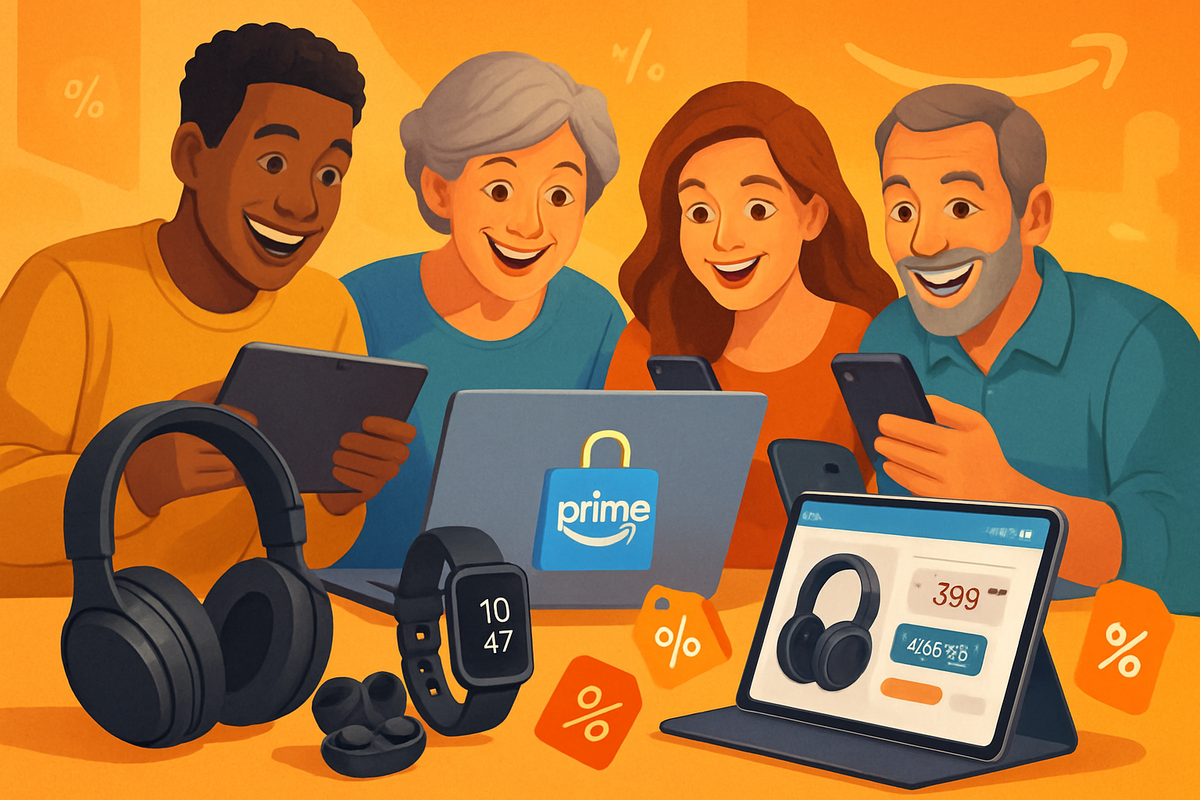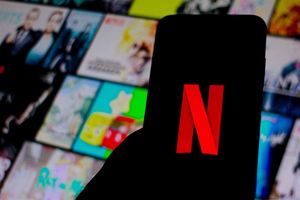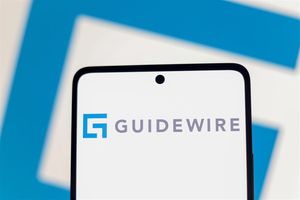
Amazon's (NASDAQ: AMZN) highly anticipated October Prime Day, officially dubbed "Prime Big Deal Days," has once again captivated consumers, serving as an early harbinger of the holiday shopping season. Running from Tuesday, October 7th, to Wednesday, October 8th, 2025, the 48-hour event offered exclusive access to a treasure trove of discounts for Prime members, with a particular emphasis on high-demand tech gadgets and personal audio devices. This strategic sales blitz aims to jumpstart consumer spending, allowing shoppers to secure coveted items and gifts well ahead of the traditional Black Friday and Cyber Monday frenzy, while also providing a crucial litmus test for consumer confidence in the current economic climate.
The event's timing, just weeks before the conventional holiday shopping rush, underscores Amazon's aggressive play to capture market share and extend the peak shopping period. For consumers, it presented a golden opportunity to snag premium electronics and top-tier headphones at significantly reduced prices, navigating what has become a landscape of strategic and often cautious spending. The success of these "Big Deal Days" is not merely measured in sales volume but also in setting the tone for the broader retail sector's performance in the crucial year-end quarter.
Unpacking the Deals: A 48-Hour Frenzy of Tech Savings
Amazon's October Prime Day 2025 delivered on its promise of substantial savings, showcasing a diverse array of deals across the technology and personal audio spectrum. The event, which concluded at 11:59 p.m. PDT on October 8th, was exclusively accessible to Prime members, solidifying the value proposition of Amazon's subscription service.
Specific details of the deals were a significant draw, with major brands offering aggressive price cuts. Apple (NASDAQ: AAPL) products, always a hot commodity, saw notable discounts on the latest M4 MacBook Air and Pro models, iPads (including the 11-inch and M4 Pro versions), Apple Watches (Series 10, SE), and the popular AirPods, AirPods Pro 2 (now with USB-C charging), and AirPods Max headphones. This marked a key moment for Apple enthusiasts looking to upgrade or enter the ecosystem without paying full retail. Beyond Apple, the event featured competitive pricing on gaming laptops from brands like Alienware and Samsung (KRX: 005930) Galaxy Book5 Pro, alongside gaming monitors and SSDs crucial for console gaming. Smart home devices, a perennial Prime Day favorite, included discounts on Amazon Ring doorbells, Blink Mini 2 security cameras, and various Kasa and Amazon smart plugs, bolstering the connected home ecosystem.
The headphone segment was particularly competitive, with consumers able to find premium audio gear at significant markdowns. Bose, a leader in noise-canceling technology, offered up to 45% off on models like the QuietComfort Ultra Wireless Headphones and Earbuds, and QuietComfort Wireless Headphones. Sony (TYO: 6758) also brought strong contenders, with deals on its acclaimed WH-1000XM5 and WF-1000XM5 noise-canceling headphones and earbuds, as well as the Sony ULT Wear and WF-C700N earbuds. Beats by Dre (owned by Apple) saw price reductions on its Studio Pro, Fit Pro, and Studio3 Wireless models. Other notable brands like Sennheiser, Google (NASDAQ: GOOGL) Pixel Buds Pro 2, JLab, Soundcore by Anker, JBL, and Nothing Ear (a) also participated, ensuring a wide selection for audiophiles and casual listeners alike. Many of these items saw discounts upwards of $100, representing substantial savings for consumers. The initial market reaction was characterized by a surge in online traffic and rapid sell-outs of popular items, indicating strong consumer appetite despite broader economic caution. Amazon also highlighted its use of generative AI-powered shopping features, such as Rufus, to enhance the customer experience by guiding them through the vast array of deals.
Corporate Fortunes: Winners and Losers in the Prime Day Arena
Amazon's October Prime Day 2025 created a clear delineation between companies that successfully leveraged the event and those that faced increased competitive pressure. The primary winner, undoubtedly, is Amazon (NASDAQ: AMZN) itself. The event not only drove substantial sales volume but also reinforced the value of its Prime membership, potentially attracting new subscribers and retaining existing ones. By extending the holiday shopping season, Amazon positioned itself to capture early spending, solidifying its dominant position in the e-commerce landscape. The strategic use of AI tools like Rufus also showcased Amazon's continued investment in enhancing the shopping experience, potentially leading to higher conversion rates.
Manufacturers of popular tech and headphone brands that offered aggressive discounts were also significant beneficiaries. Apple (NASDAQ: AAPL), despite its premium pricing, saw strong demand for its MacBooks, iPads, Apple Watches, and especially its AirPods line, which consistently features among the top-selling items during such events. Similarly, Bose, Sony (TYO: 6758), and Samsung (KRX: 005930), with their highly sought-after noise-canceling headphones, earbuds, and other electronics, likely experienced a substantial boost in sales, clearing inventory and gaining market share. Companies in the smart home sector, such as Ring and Blink (both Amazon subsidiaries), and third-party accessory makers like Anker (via its Soundcore brand), also capitalized on the increased consumer interest in connected devices and portable power solutions. These companies benefited from Amazon's massive platform reach and the event's promotional power, translating into increased revenue and brand visibility.
Conversely, traditional brick-and-mortar retailers and smaller e-commerce players who couldn't match Amazon's scale, logistical capabilities, or aggressive pricing strategies likely faced challenges. While some may have launched their own "counter-sales," the sheer gravitational pull of Prime Day often diverts a significant portion of consumer spending. Retailers heavily reliant on the Black Friday/Cyber Monday timeline might find their early holiday sales cannibalized by Amazon's October event, forcing them to re-evaluate their promotional calendars. Furthermore, companies with less popular or non-discounted products might have seen reduced sales as consumers prioritized the heavily discounted items. The "deal fatigue" observed among some consumers also suggests that only the most compelling offers truly cut through the noise, leaving less attractive deals to languish. This dynamic puts pressure on all retailers to offer genuine value, not just superficial discounts.
Broader Implications: Reshaping the Retail Landscape
Amazon's October Prime Day 2025 is more than just a sales event; it's a significant indicator of evolving industry trends and has far-reaching implications for the broader retail landscape. Firstly, it firmly entrenches the concept of an extended holiday shopping season, effectively pulling demand forward from November into October. This trend, accelerated by supply chain uncertainties in previous years, is now a permanent fixture, forcing all retailers to adapt their inventory management, marketing campaigns, and staffing schedules. Competitors like Walmart (NYSE: WMT) and Target (NYSE: TGT) are increasingly launching their own early-bird sales, creating a more fragmented and competitive pre-holiday period.
The event also highlights the continued dominance of e-commerce, with Amazon at its vanguard. While brick-and-mortar stores are adapting with omnichannel strategies, the convenience and vast selection offered by online platforms, especially during curated sales events, remain unparalleled. The regulatory implications, while not immediate, are worth noting. As Amazon continues to expand its market power through events like Prime Day, antitrust scrutiny from government bodies in the U.S. and Europe could intensify, particularly concerning how it leverages its platform to favor its own brands or dictate terms to third-party sellers. Historical precedents, such as the increasing number of "Black Friday in July" or "Cyber Monday in October" sales from other retailers, show that Amazon's innovations quickly become industry standards, compelling others to follow suit to remain competitive. This continuous cycle of promotional events can, however, lead to "deal fatigue" among consumers, making it harder for retailers to stand out.
The focus on specific product categories like tech and headphones also reflects broader consumer trends. In an era where remote work, digital entertainment, and personal connectivity are paramount, high-quality electronics and audio gear remain essential purchases. The event's success in these categories underscores their continued importance in consumer spending habits, even amidst economic pressures. The increasing sophistication of AI-powered shopping tools, as demonstrated by Amazon's Rufus, also points to a future where personalized recommendations and seamless deal discovery become standard, further enhancing the online shopping experience and setting a new bar for customer engagement across the industry.
The Road Ahead: Navigating Post-Prime Day Dynamics
Looking beyond the immediate success of Amazon's October Prime Day 2025, several short-term and long-term possibilities emerge for both consumers and the market. In the short term, retailers who observed Amazon's performance will be fine-tuning their strategies for the upcoming Black Friday and Cyber Monday events. Expect an intensified promotional period in November, with competitors striving to offer even more aggressive deals to counter the early spending captured by Amazon. This could lead to a highly competitive landscape for consumers, potentially yielding even deeper discounts on remaining inventory. For Amazon itself, the challenge will be to maintain momentum and ensure that the early sales don't significantly cannibalize its traditional holiday sales.
In the long term, the continued success of October Prime Day reinforces the strategic pivot towards an extended, multi-event holiday shopping season. Retailers will need to adapt by spreading out their inventory, marketing budgets, and logistical planning across a longer timeframe. This might necessitate more agile supply chain management and a greater emphasis on predictive analytics to anticipate consumer demand across different sales windows. Market opportunities may emerge for logistics and fulfillment companies supporting this extended season, as well as for marketing technology firms specializing in multi-channel campaign management. Challenges include managing "deal fatigue" and ensuring that promotions remain genuinely attractive to consumers who are increasingly sophisticated in their comparison shopping. Potential strategic pivots for brands might include launching exclusive products during specific sales events or offering tiered discounts to different customer segments to maximize engagement.
Potential scenarios and outcomes include a more balanced distribution of holiday spending across October, November, and December, rather than a concentrated rush. This could lead to less pressure on last-mile delivery services and a more consistent revenue stream for retailers. However, it also means that the "peak" of the holiday season might become less pronounced, requiring continuous innovation in promotional strategies. For the consumer electronics market, a sustained period of discounted sales could impact profit margins if not managed carefully, but it also allows for faster adoption of new technologies. The overall outlook points to a dynamic retail environment where adaptability and data-driven decision-making will be crucial for success.
Prime Day's Lasting Impact: A New Era of Holiday Shopping
Amazon's October Prime Day 2025 stands as a pivotal event, solidifying the shift towards an extended holiday shopping season and underscoring the enduring power of curated online sales. The key takeaways from this year's "Prime Big Deal Days" are clear: Amazon (NASDAQ: AMZN) continues to exert immense influence over consumer purchasing habits, effectively pulling holiday spending forward and setting a challenging benchmark for competitors. The event successfully offered significant value on high-demand tech and headphones, catering to a consumer base that is increasingly strategic and value-conscious in its spending.
Moving forward, the market will likely see an intensification of early holiday promotions from various retailers, further blurring the lines between traditional sales events. This prolonged promotional period necessitates a re-evaluation of inventory strategies, marketing spend, and supply chain logistics across the retail sector. Companies that can effectively manage these extended sales cycles, offer genuine value, and leverage advanced customer engagement tools will be best positioned for success. The strong performance of brands like Apple (NASDAQ: AAPL), Bose, and Sony (TYO: 6758) during Prime Day highlights the continued consumer appetite for premium electronics, especially when coupled with attractive discounts.
The lasting impact of this event is the normalization of a multi-peak holiday shopping season, where October is now as critical as November for securing early sales. Investors should closely watch the sales figures and consumer sentiment reports from this Prime Day to gauge the health of consumer spending and the broader retail outlook for the remainder of 2025. Furthermore, attention should be paid to how other major retailers respond in the coming weeks, as their counter-strategies will shape the competitive landscape leading into the traditional Black Friday and Cyber Monday events. The battle for the holiday dollar has officially begun, and Amazon has fired the opening salvo with considerable effect.
This content is intended for informational purposes only and is not financial advice.





